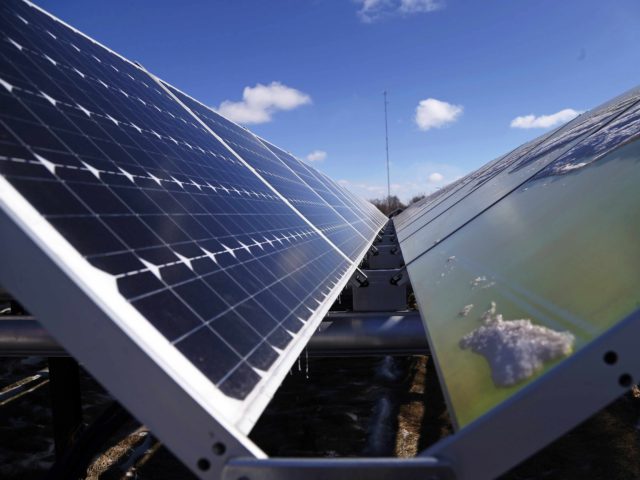We know about the push for renewables such as wind and solar, but there are other, more subtle aspects of the Obama Administration’s energy policy efforts that have had negative impacts. By the time they are felt, it’s often too late to do much about them.
Dozens of coal mining companies have gone bankrupt since President Obama took office and those that are still functioning are doing so with far fewer workers.
One such mine is in the Four Corners region of New Mexico, the San Juan Mine, one of the largest underground coal mines in the world. It has been a “top employer” in the region. Earlier this year, the mine employed more than 400 people. On June 16, 85 workers were laid off. Which, according to the Albuquerque Journal, were “necessary because the San Juan Generating Station, which uses all the mine’s coal, plans to retire two of its four units”—part of an agreement between Public Service Company of New Mexico [PNM] and the Environmental Protection Agency.
The “agreement” to shut down half the power plant—thereby cutting the immediate need for coal—is the result of the EPA’s 2011 Regional Haze Program that, according to a report from the U.S. Chamber of Commerce, “seeks to remedy visibility impairment at federal National Parks and Wilderness Areas.” This, the report states, “is an aesthetic regulation, and not a public health standard”—though the results will be undetectable to the human eye. For this, nearly a quarter of the mine’s workforce has been terminated.
The reality is, anti-fossil fuel groups like the Sierra Club, wanted the entire plant shut down. PNM is currently considering a plan for meeting its needs for electricity without it. If the plant closes, all jobs, approximately 800, at both the mine and the generating station will be gone—greatly impacting the local economy.
Obama’s far-reaching energy policies are insidious—hurting consumers in ways we don’t even think of.
On June 10, Stephen Yurek, president and CEO of the Air-Conditioning, Heating and Refrigeration Institute (AHRI), gave testimony before the U.S. House of Representatives Subcommittee on Energy and Power. He addressed the nearly 40-year old Energy Policy and Conservation Act (EPCA)—which, he said, “has not been updated to reflect new technologies and economic realities” and “has been misapplied by the Department of Energy [DOE].” The Obama Administration has run amuck in its application of EPCA—issuing regulation after regulation. Yurek backs this up by pointing out the difference in the Clinton and Obama administrations: “While the Clinton Administration’s DOE issued just six major efficiency rules during his eight years in office, the Obama Administration’s DOE issued eight major efficiency rules in 2014 alone—a record according to the Office of Information and Regulatory Affairs. And DOE’s Unified Agenda indicate that between 2015 and the end of the administration, 11 additional major efficiency rules can be expected to be issued.”
These rules, Yurek explained, “use unrealistic assumptions” to create “higher efficiency levels than are economically justified for consumers.” He encourages Congress to force the DOE to “consider the real-world cumulative impact of product efficiency standards among agencies, businesses, and consumers.”
Yurek summarizes: “When new products and equipment cost more than consumers can afford, they find alternatives, some of which compromise their comfort and safety, while saving less energy or none at all or in some cases using more energy.”
In the name of energy efficiency, on December 6, 2013, Obama issued a memorandum ordering federal buildings to triple renewable energy use. He declared: “Today I am establishing new goals for renewable energy as well as new energy-management practices.” Now, more than three years later, we get a taste of what his federal building initiative is costing taxpayers.
On June 16, 2016, the Federal Housing Finance Agency’s (FHFA) Office of Inspector General released a report on the 53 percent cost escalation at Fannie Mae’s extravagant new downtown DC building. As a result of the financial crisis, mortgage giant Fannie Mae received a bailout of $116.1 billion in taxpayer funds and FHFA now serves as the conservator over Fannie Mae.
“Because Fannie Mae is an entity in the conservatorship of the U.S. government,” the report states: “FHFA, as conservator, will need to assess the anticipated efficiencies of specific proposed features against estimated costs of those features and determine whether the efficiencies warrant the costs.”
In response to the call for “immediate, sustained comprehensive oversight from FHFA,” Melvin L. Watt, FHFA director, defended himself. In the face of the Inspector General’s caustic criticism, he claimed that many of the upfront investments would save money over time. Watt’s memorandum only offers two such examples and one is more efficient lighting. He claims: “upfitting space with more expensive LED lighting instead of less expensive fluorescent lighting would result in significantly cheaper operating costs.” The other example was window shades.
These are just three recent examples of Obama Administration policies that were put in place years before the resulting job losses and costs to consumers and taxpayers are felt. Gratefully, for now, the Supreme Court put a stay on one of his most intrusive and expensive programs—the Clean Power Plan. But plenty of little rulemakings, programs, and memorandums still adversely impact jobs and figure to increase costs long after he leaves office.
The author of Energy Freedom, Marita Noon serves as the executive director for Energy Makes America Great Inc., and the companion educational organization, the Citizens’ Alliance for Responsible Energy (CARE). She hosts a weekly radio program: America’s Voice for Energy—which expands on the content of her weekly column. Follow her @EnergyRabbit.

COMMENTS
Please let us know if you're having issues with commenting.